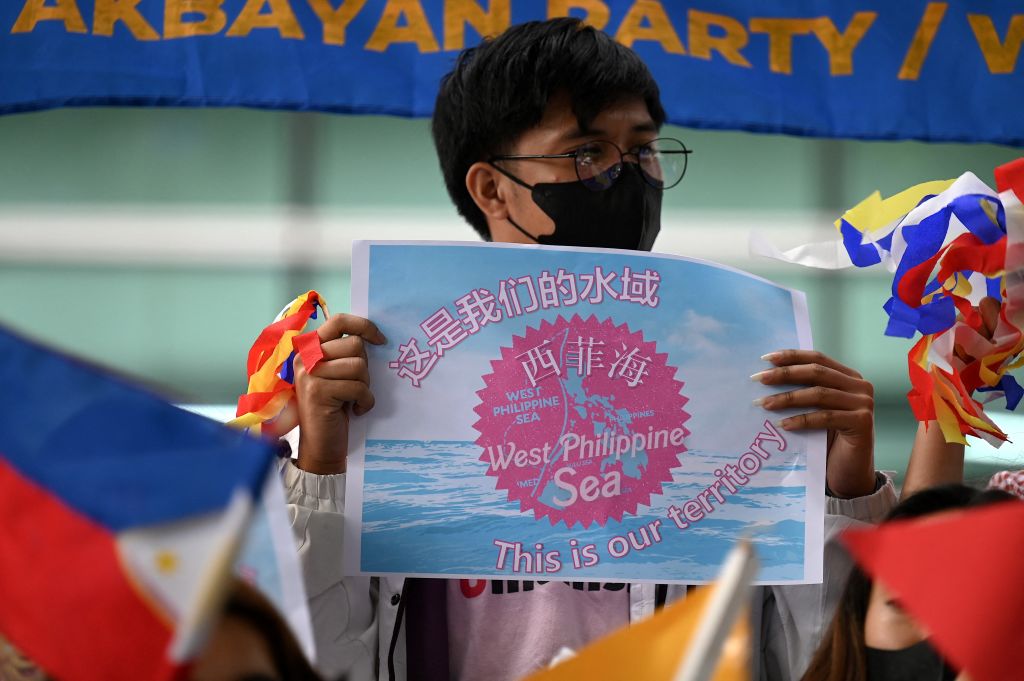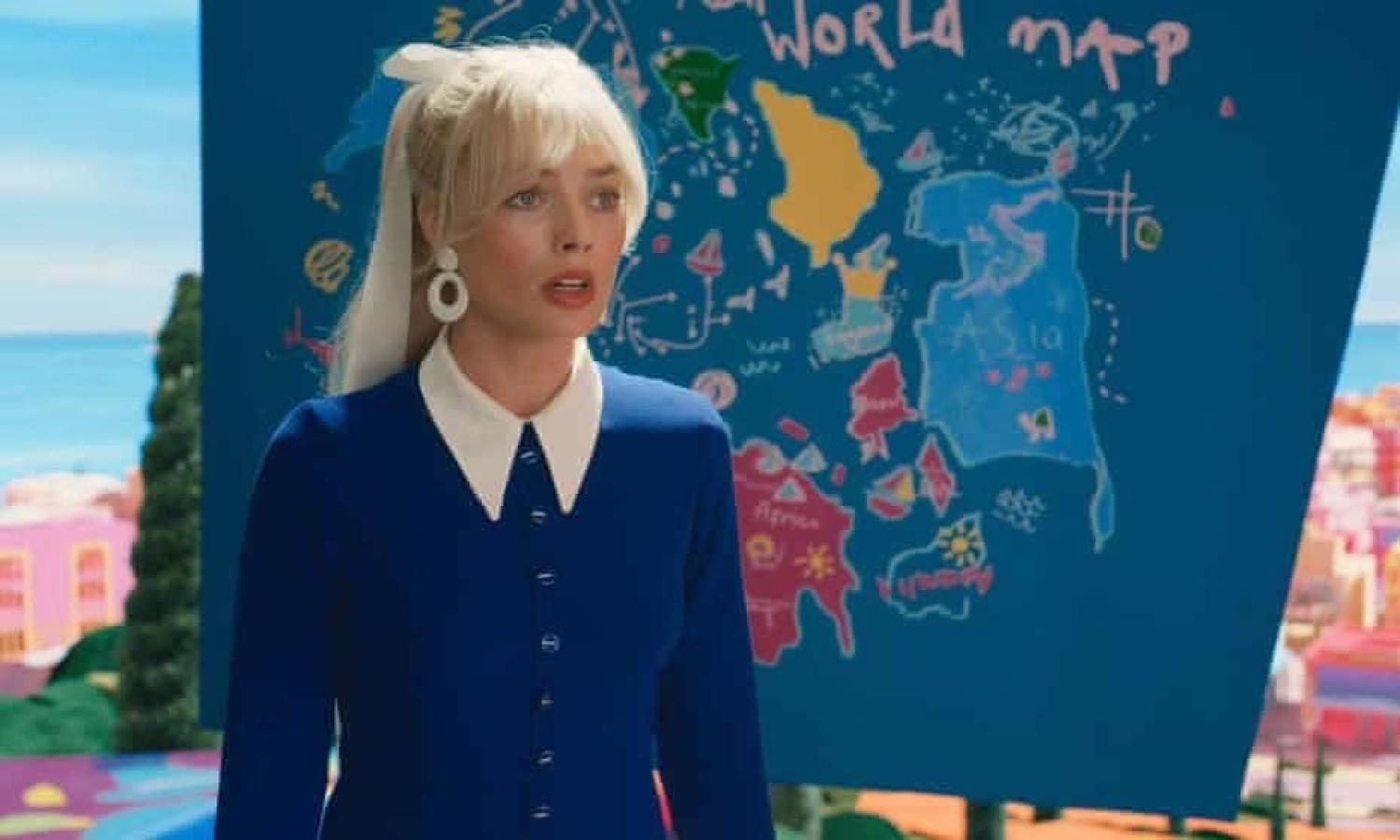To think that even before Hollywood actors and writers went out on strike, the year had already produced one of the biggest film controversies – Barbie stumbling across China’s “nine-dash line” claim in the South China Sea.
First Vietnam banned the movie over one scene with an exaggerated, colourful cartoon-like depiction of a world map showing “Asia” with a run of eight dashes extending into the ocean.
And now the Philippines, while clearing the release of the movie, having accepted this was not meant to be China’s nine-dash version, still felt the need to issue a stern statement that “warns all filmmakers, producers, and distributors that it will not hesitate to sanction and/or ban films that exhibit the ‘nine-dash line’ for being contrary to the law”.
All of which has left the studio a little bemused at the film’s unexpected appeal on the foreign policy circuit. The map, Warner Brothers said, “is a whimsical, child-like crayon drawing. The doodles depict Barbie’s make-believe journey from Barbie Land to the real world. It was not intended to make any type of statement."
Maps, however, have meaning. Daily media depictions of what purports to be Russian or Ukrainian-controlled territory in Eastern Europe illustrate that point.
Vietnam’s response to the Barbie film show how sensitive maps can be in Southeast Asia. Nor is this the first time that film and television depictions of the actual nine-dash line, or what could even be interpreted as illustrative of that line, have been objected to. In 2021, the Philippines raised its own objections to the ABC/Netflix series Pine Gap over a more precise visual display of the line.
Officially claimed by China since 1947, the line comprising nine dashes extends from the Chinese mainland and Hainan Island deep into the South China Sea, running adjacent to the coasts of Vietnam and the Philippines. The line encircles the disputed Spratly Islands and Paracel Islands. While the South China Sea islands, rocks, reefs and shoals that fall within the line are occupied by China, Malaysia, the Philippines and Vietnam, sovereignty over all of these features is unresolved. The region is also notable for having few settled maritime boundaries, partly as a result of the contested status of the islands.

China’s nine-dash line has always been legally ambiguous. China claims the line depicts an area of the South China Sea over which it “has indisputable sovereignty over the islands … and the adjacent waters, and enjoys indisputable sovereign rights and jurisdiction over the relevant waters as well as the seabed and subsoil thereof”.
This is not a view shared by China’s regional neighbours and more generally by the international community. In 2016, a Tribunal, created under the 1982 UN Convention on the Law of the Sea, unanimously ruled that the nine-dash line had no validity under both the Convention and general international law. Notwithstanding that unambiguous ruling, China has persisted in advancing its claims based on the line. It has done so by rejecting outright the competence, jurisdiction and validity of the Tribunal and its ruling. It has continued to diplomatically assert its position in the South China Sea. Physically, it has continued to build artificial islands in the region, of which some appear to have been militarised. China’s maritime militia harass and provoke fishers operating within or adjacent to the line. The Chinese People’s Liberation Army Navy and Air Force conduct regional patrols and seek to exclude air and sea navigation and any associated exercises conducted by foreign military forces such as Australia, Canada and the United States. In sum, China is seeking to make the region a “Chinese lake” over which it exercises various forms of control.
There is longstanding sensitivity about British and French colonial maps that depict borders and territory in East Asia. One legacy of these maps has been disputes before international courts. In 1962, Cambodia and Thailand went to the International Court of Justice in a border dispute over the Temple of Preah Vihear where colonial-era maps were relied upon. Likewise, in other more recent International Court cases between Malaysia and Indonesia (2002) and Malaysia and Singapore (2008), maps were central to disputes over contested islands. While maps in these international cases have rarely been conclusive, they are a basis for factual legal evidence and can legitimately be presented to a court.
The nine-dash line is unique when compared to the other contentious Asian maps. The line does not draw a land boundary. The line encloses ocean space comprising contested islands, rocks, reefs, shoals and seabed. The waters it encloses are resource rich with oil and gas reserves and sought-after fisheries. The line is asserted unilaterally, without the negotiated agreement of China’s maritime neighbours. It has no modern legal precedent, and an international tribunal has conclusively dismissed its legality.
Notwithstanding all of this, the nine-dash line persists in Beijing and the Chinese imagination, and in the legal and geopolitical domain. It has also gained increasing traction in popular culture. The “Barbie Line” is fictional, but that Hollywood has given some cartoonish credibility to the nine-dash line will confirm for the Chinese Communist Party the success of their relentless pursuit of its legitimacy.

